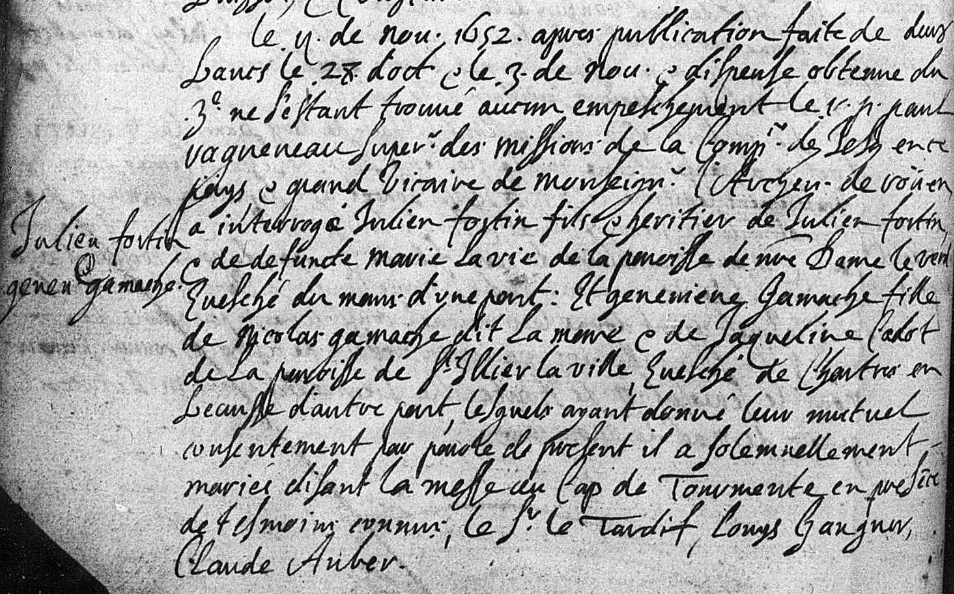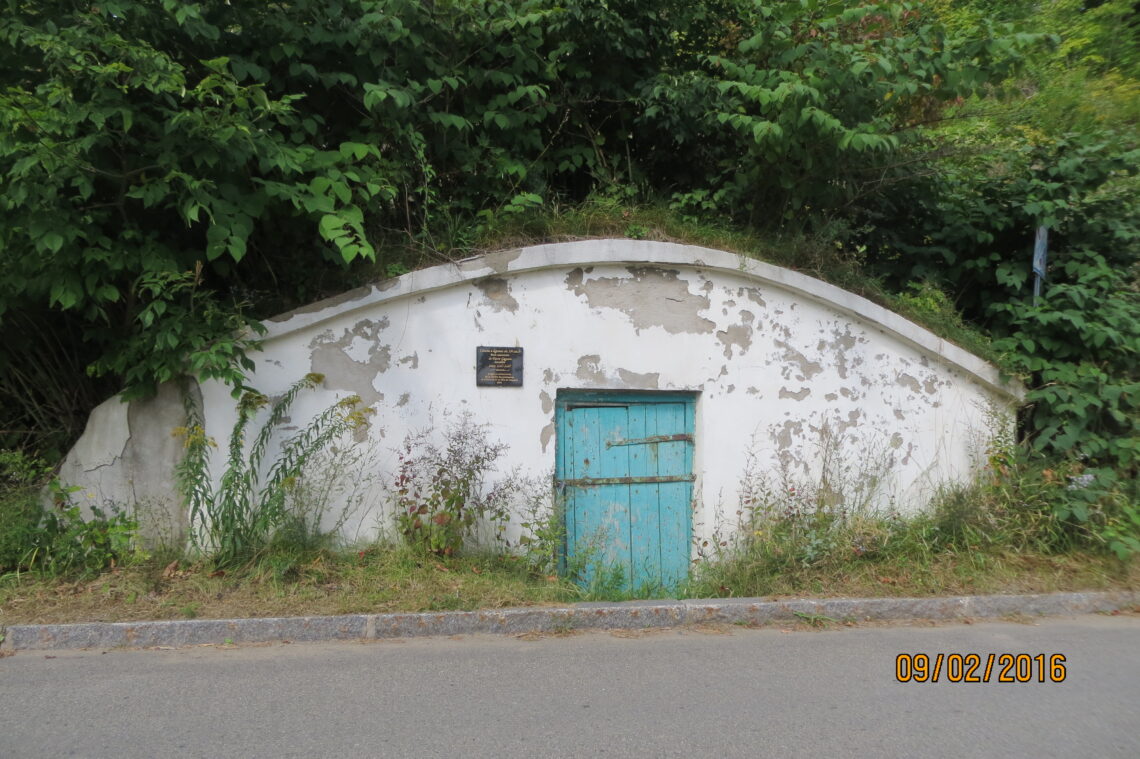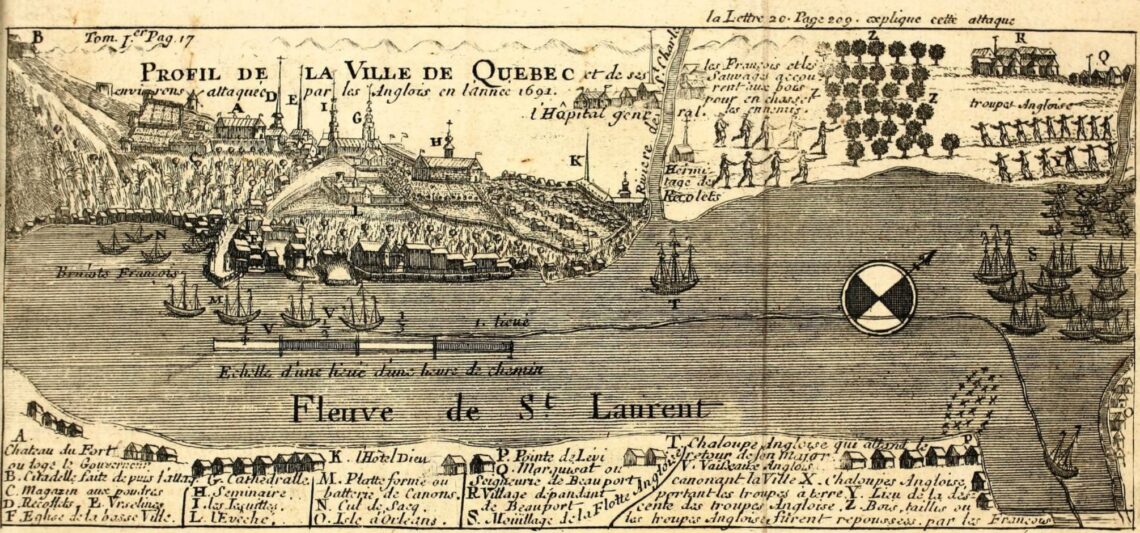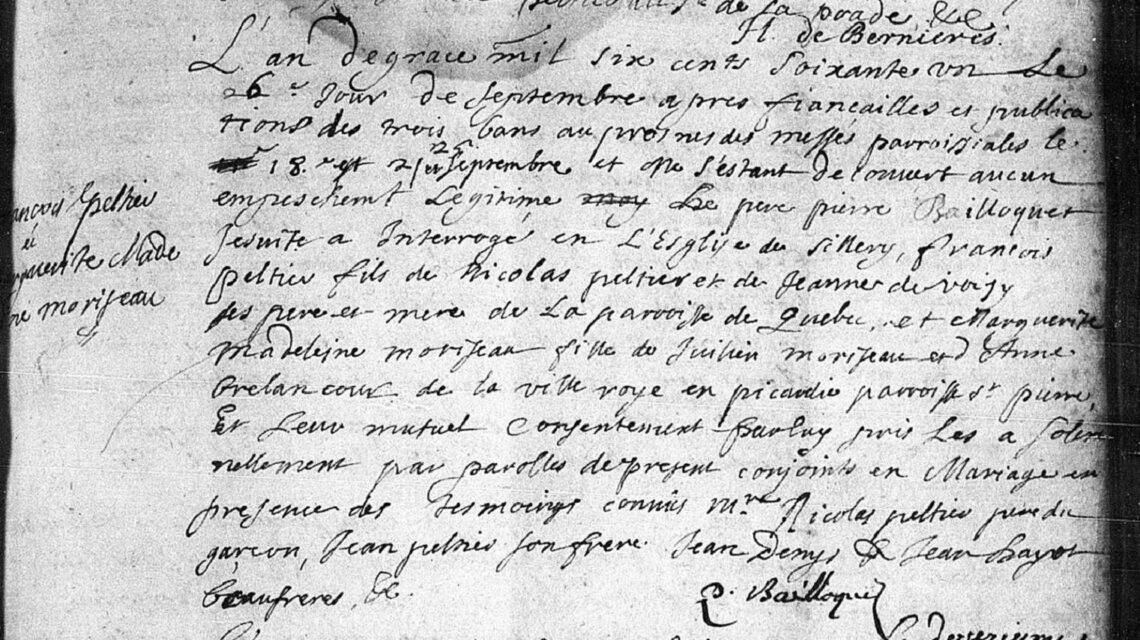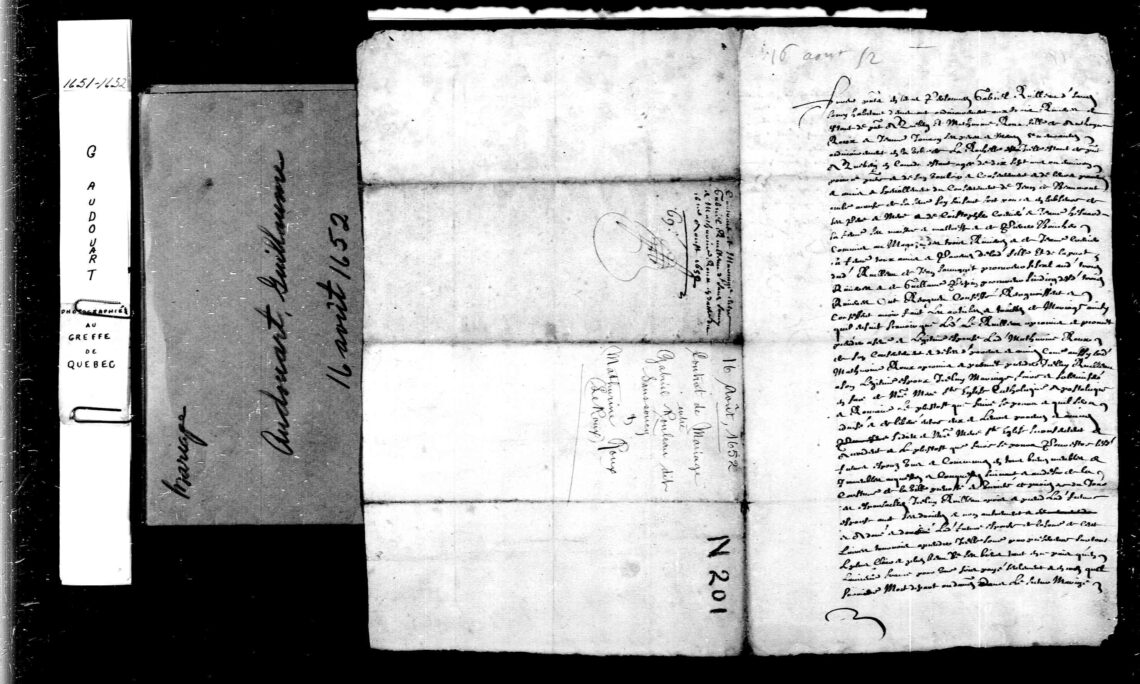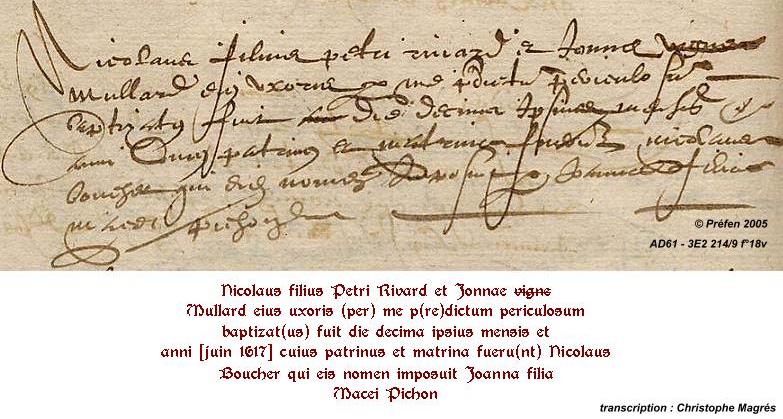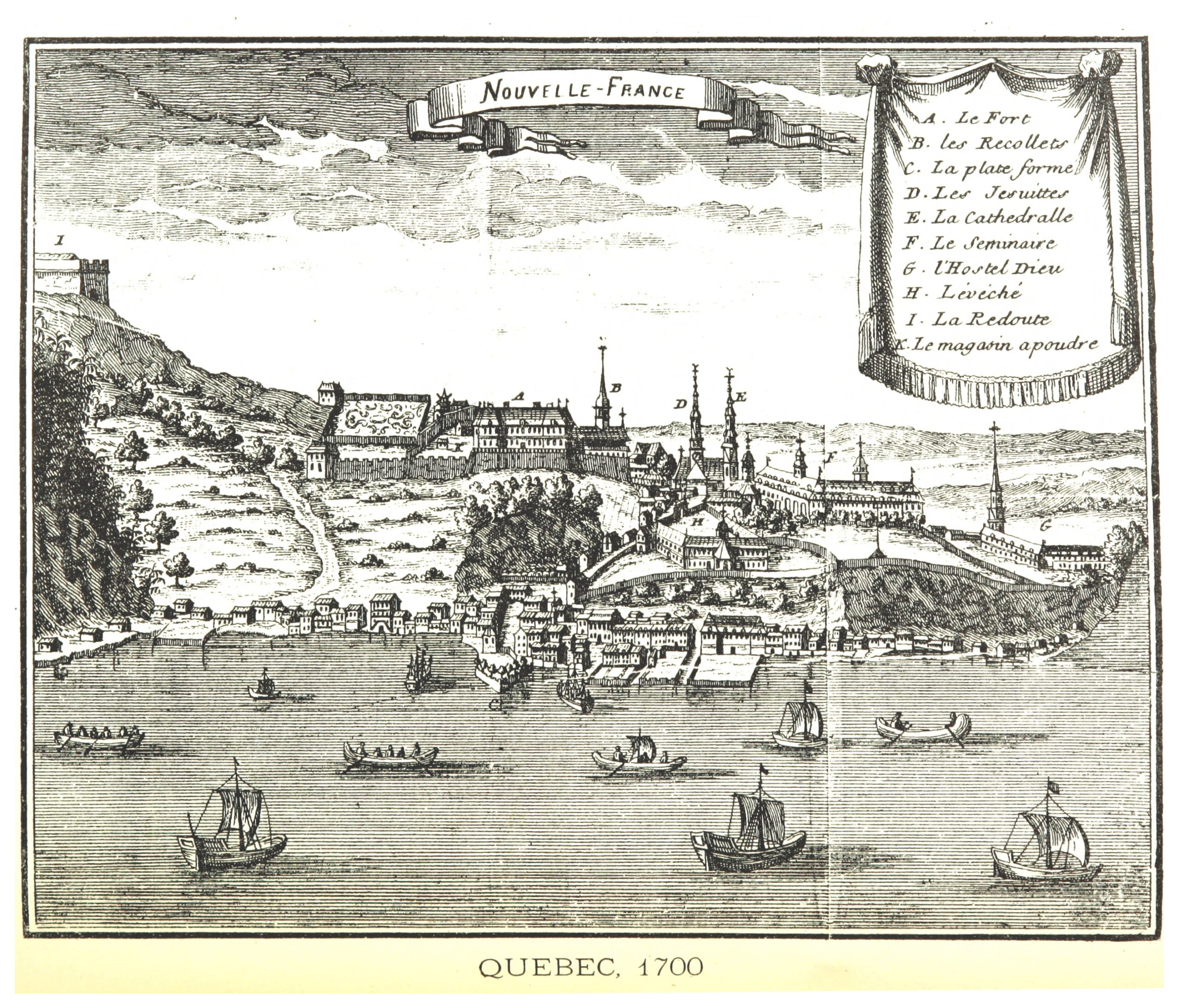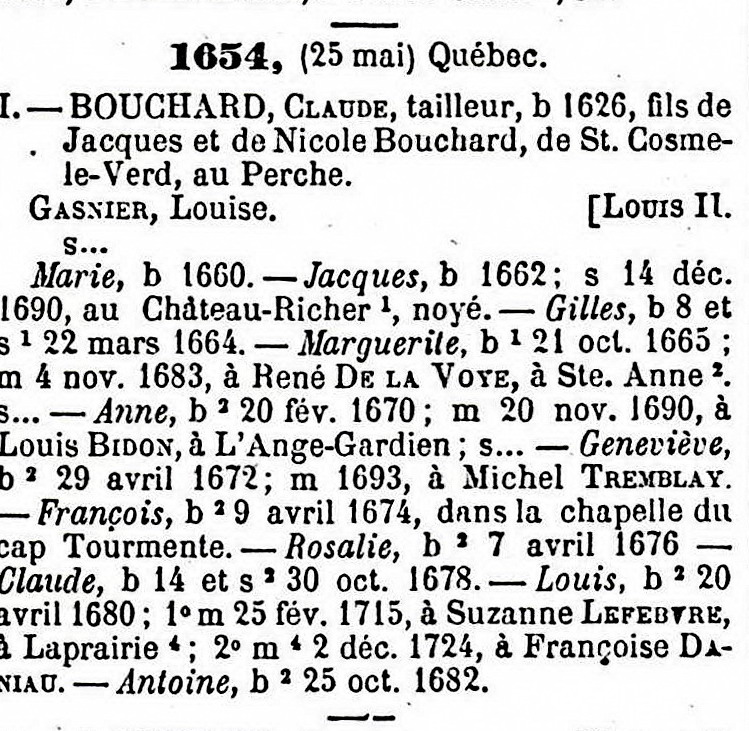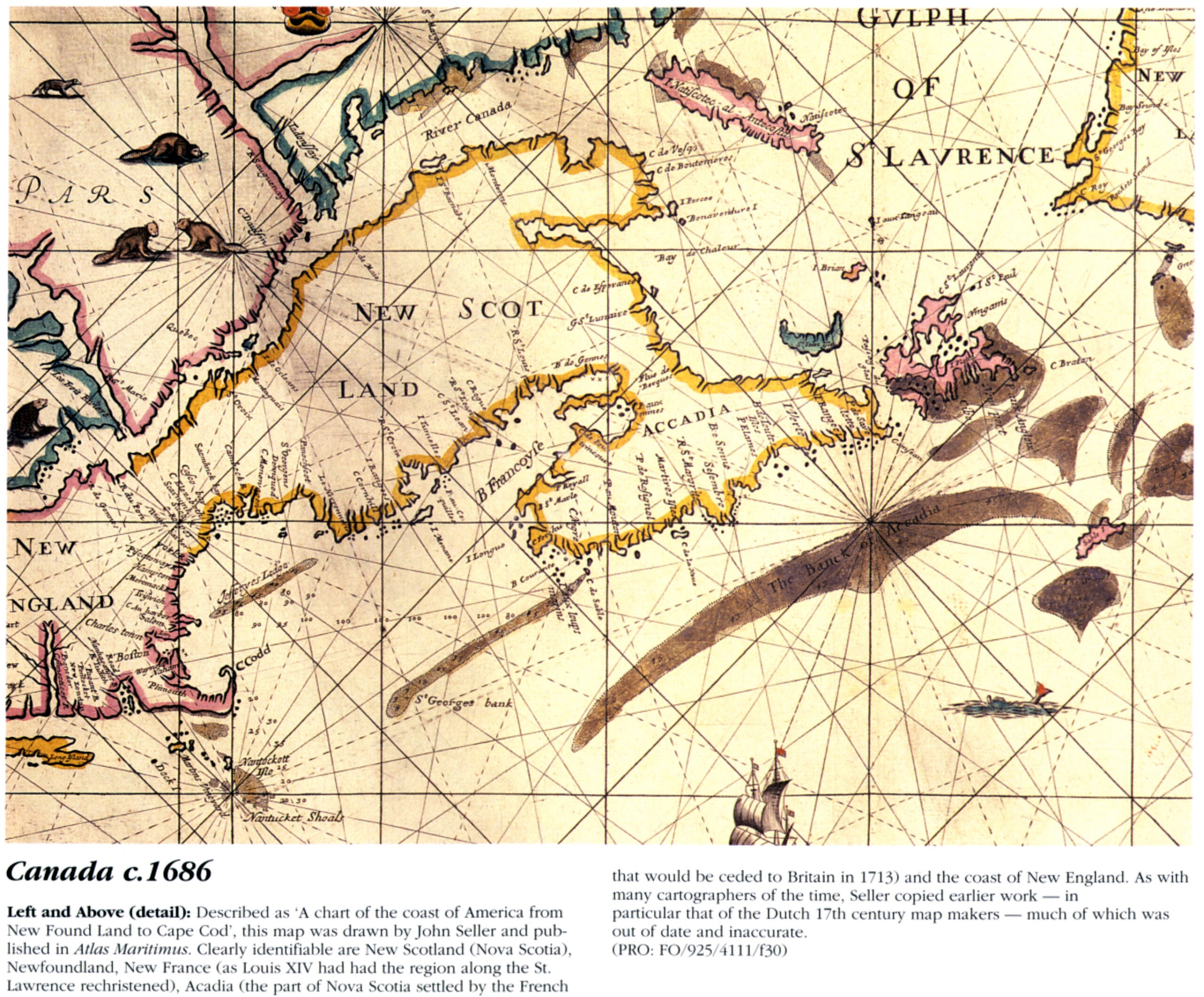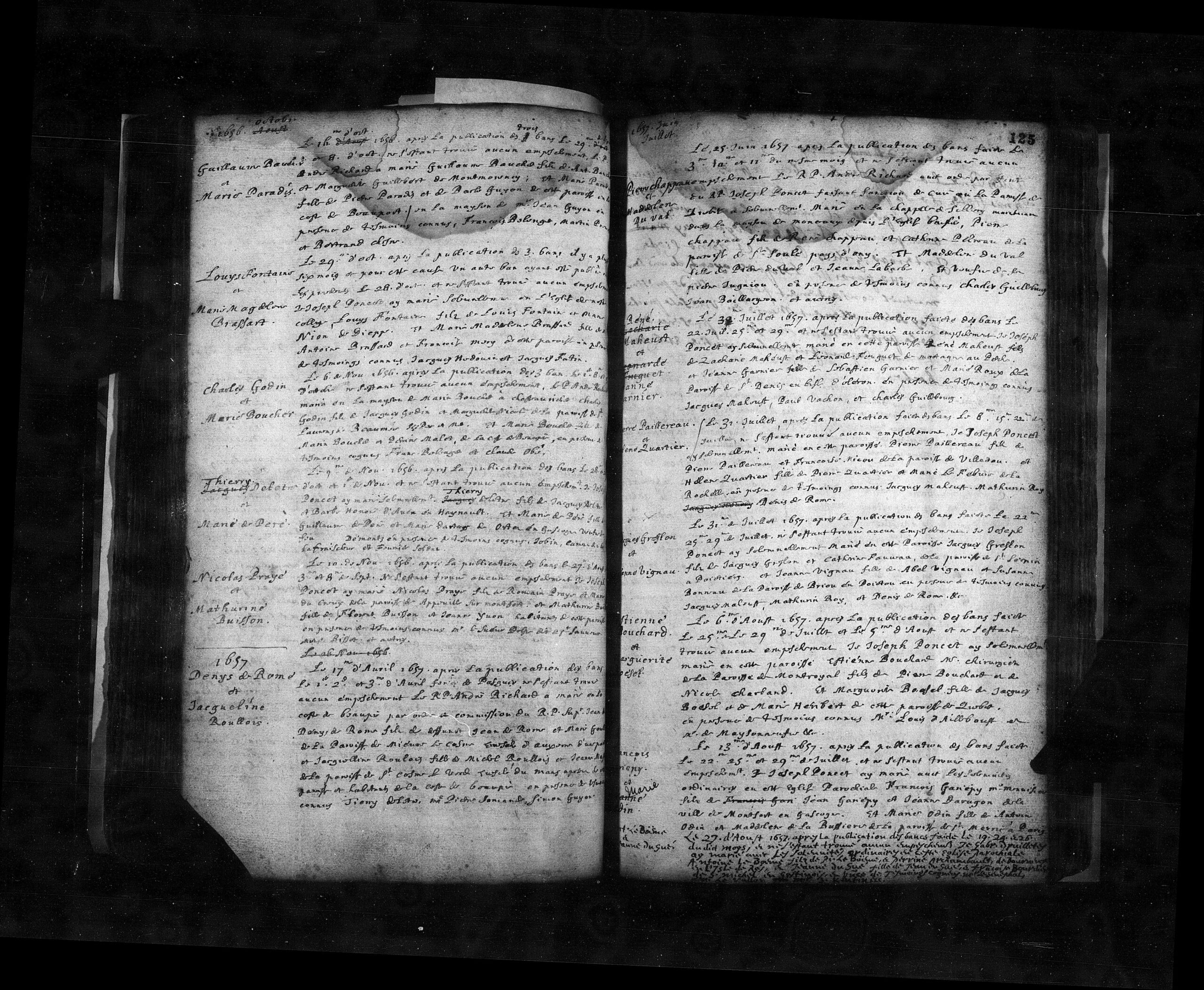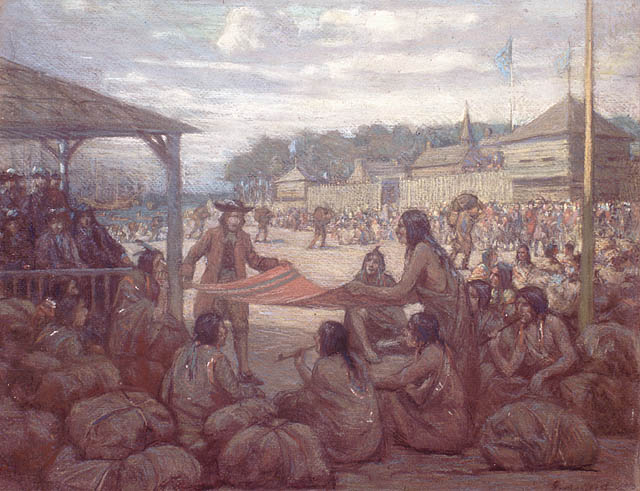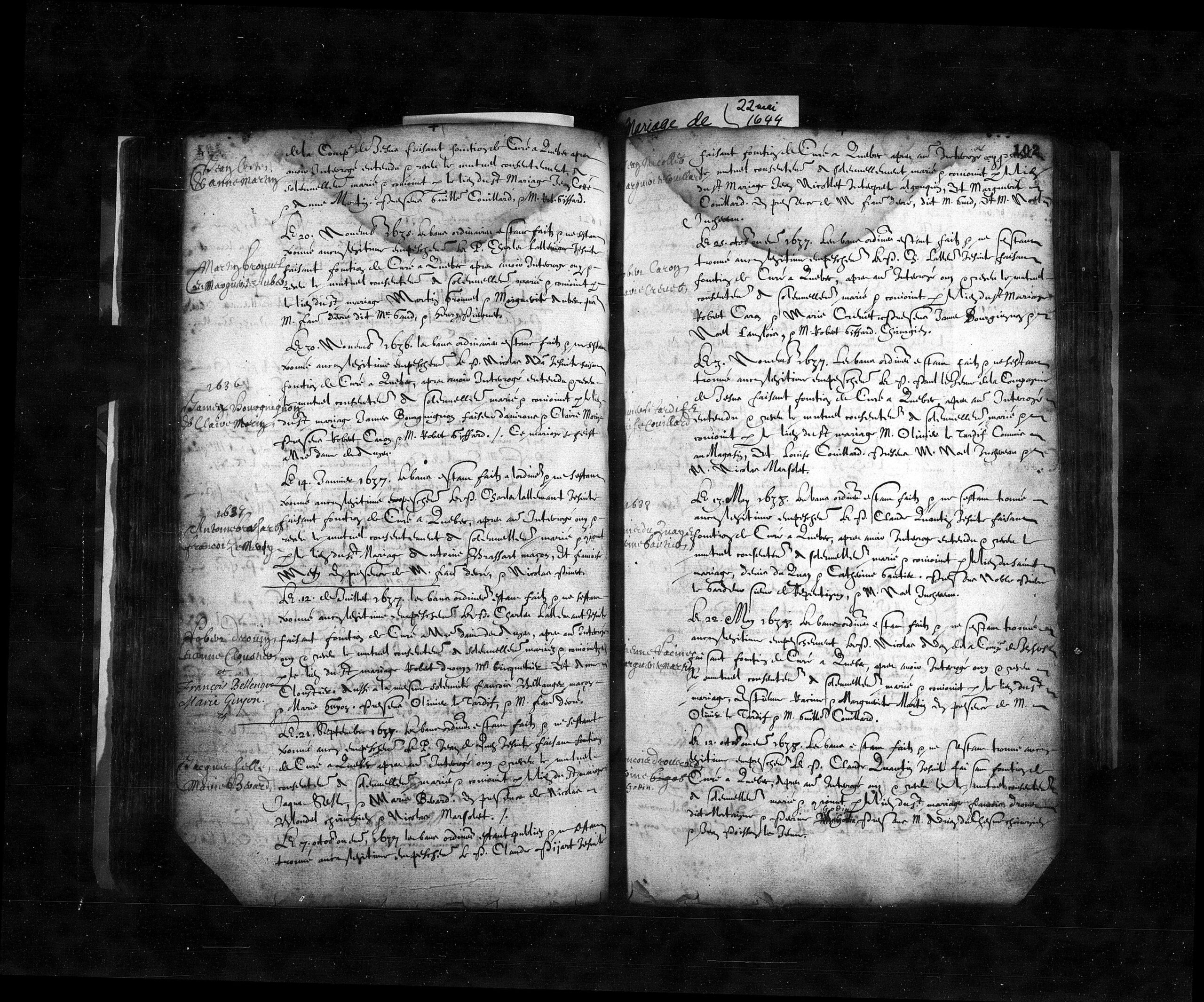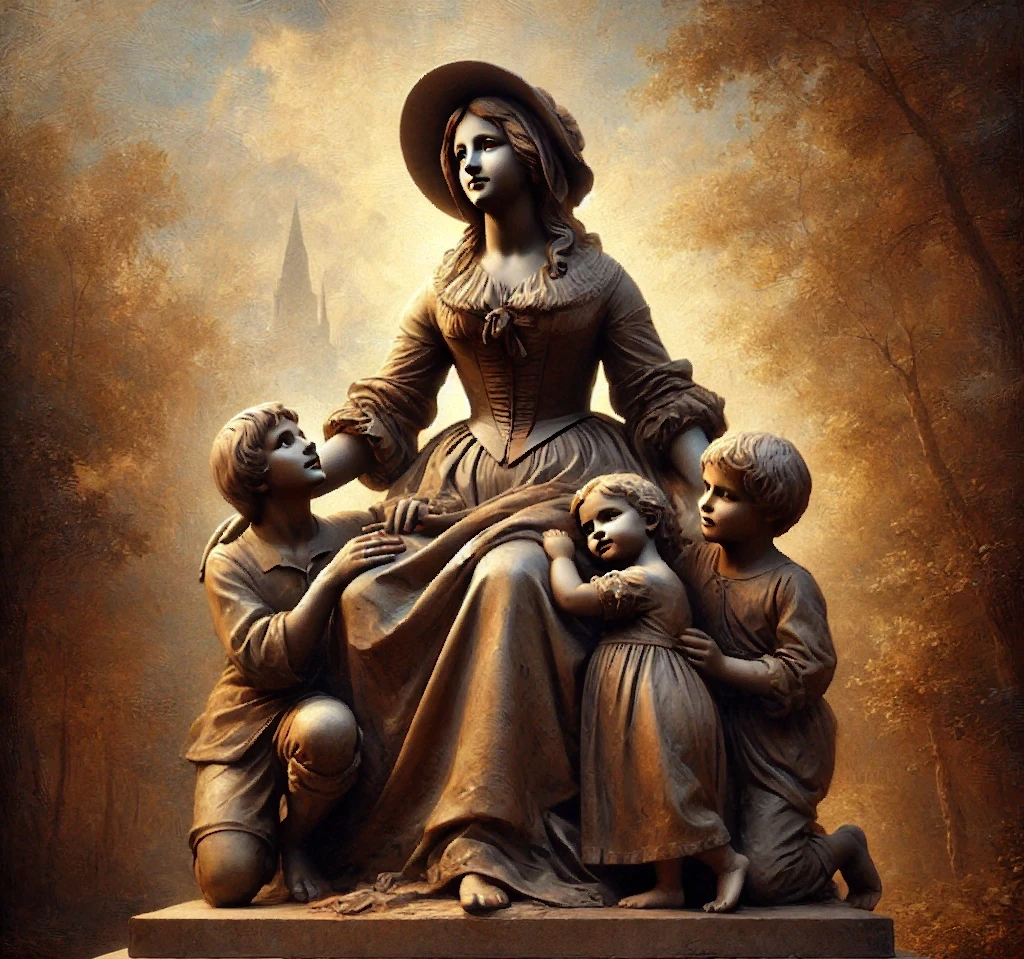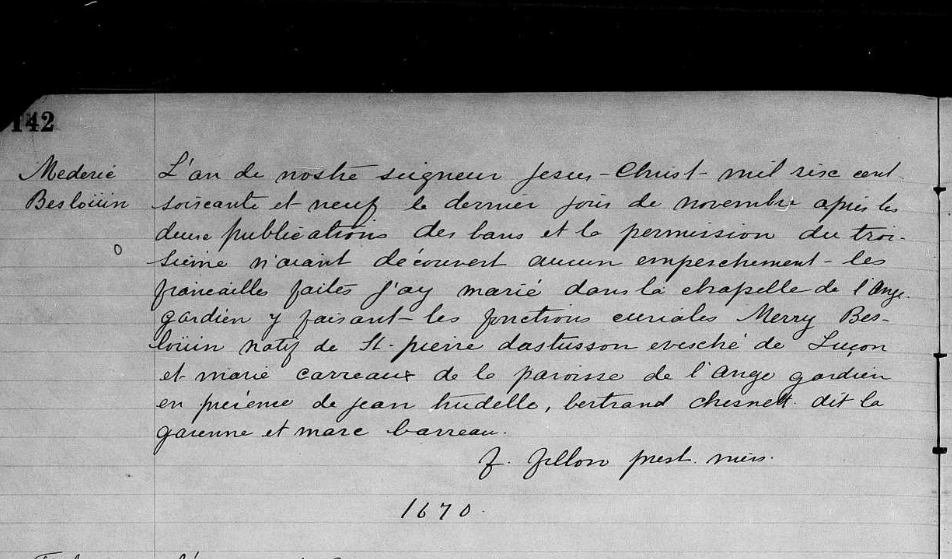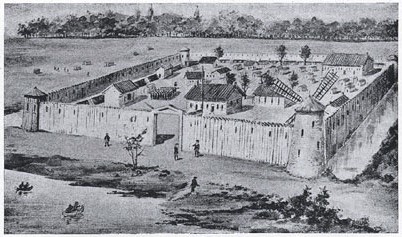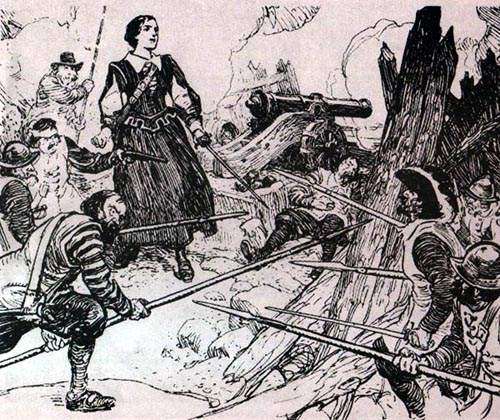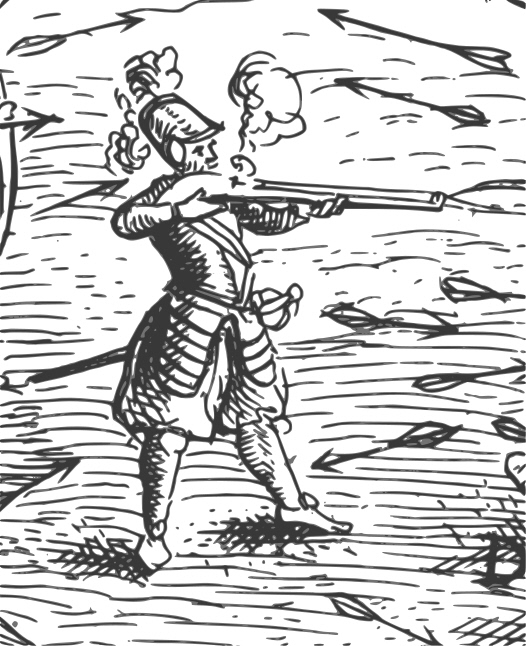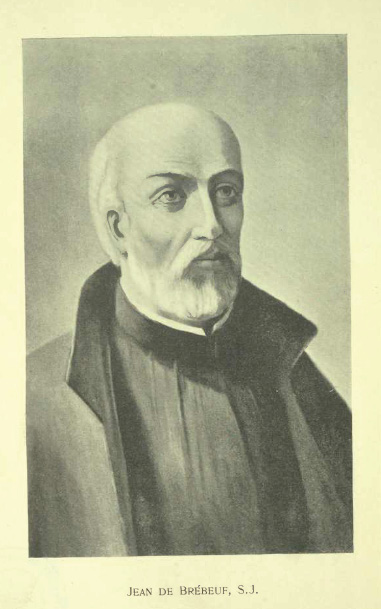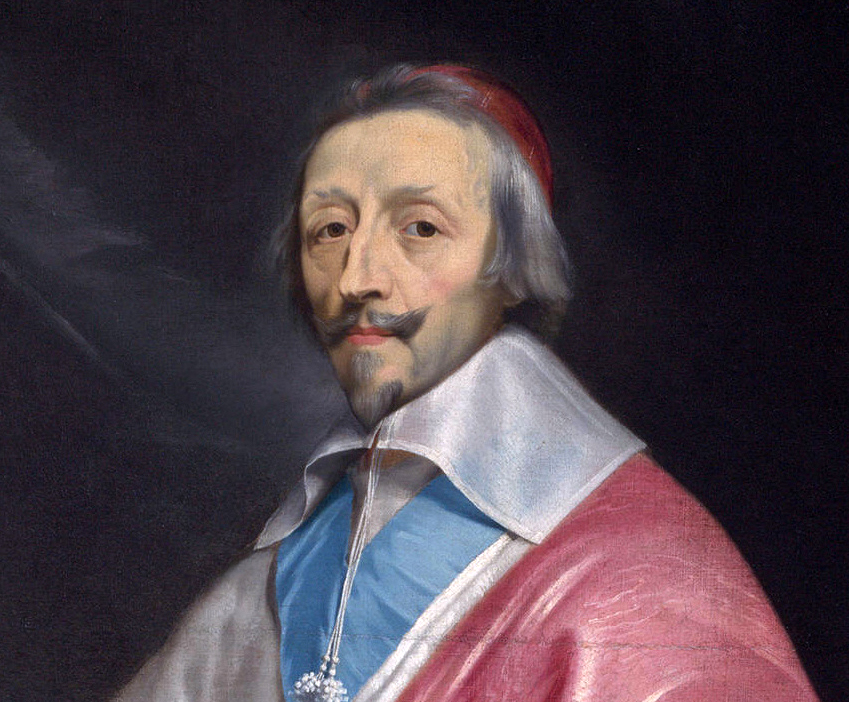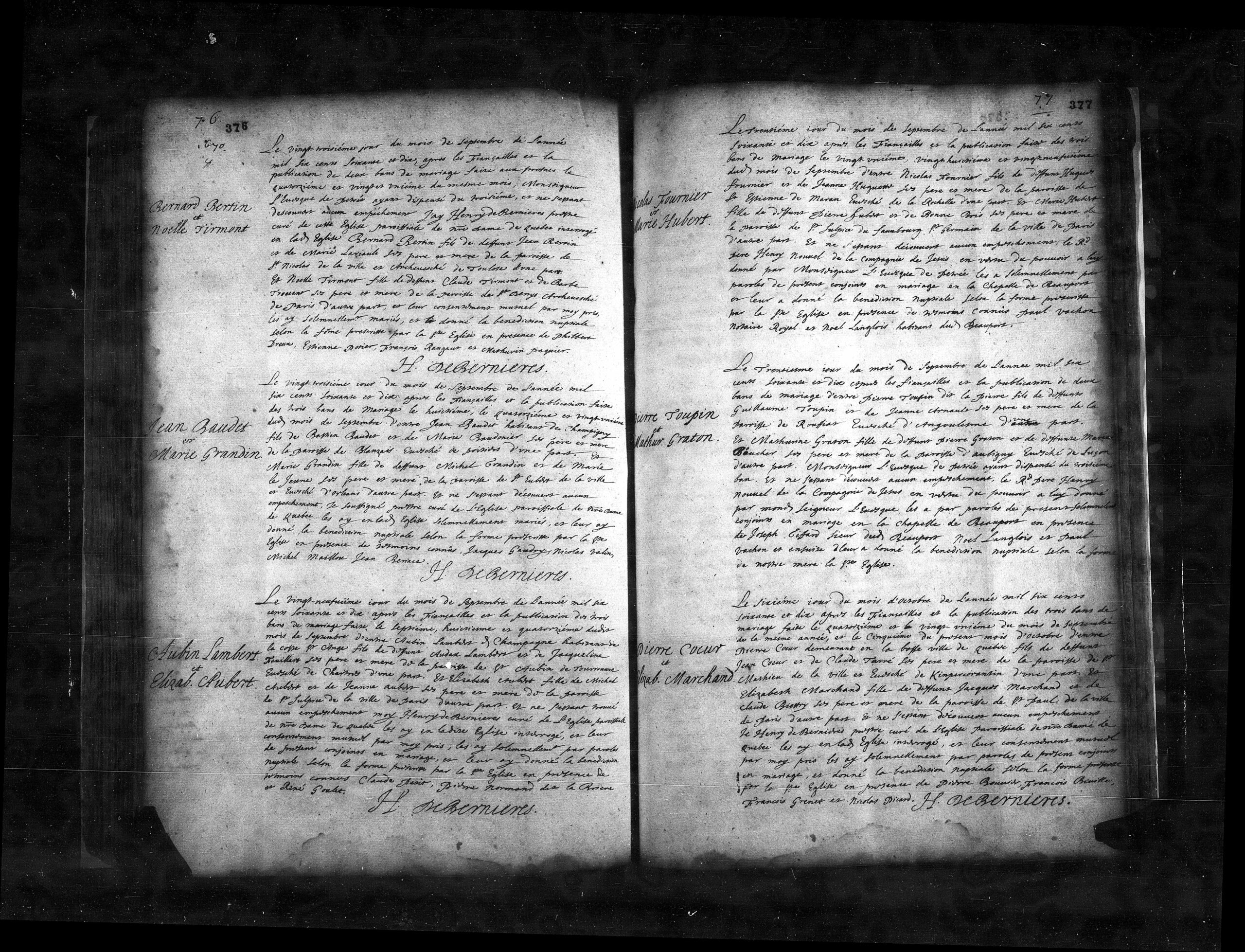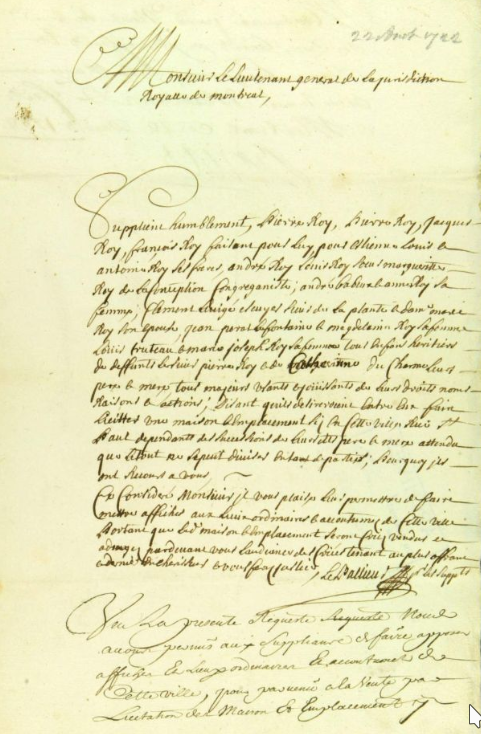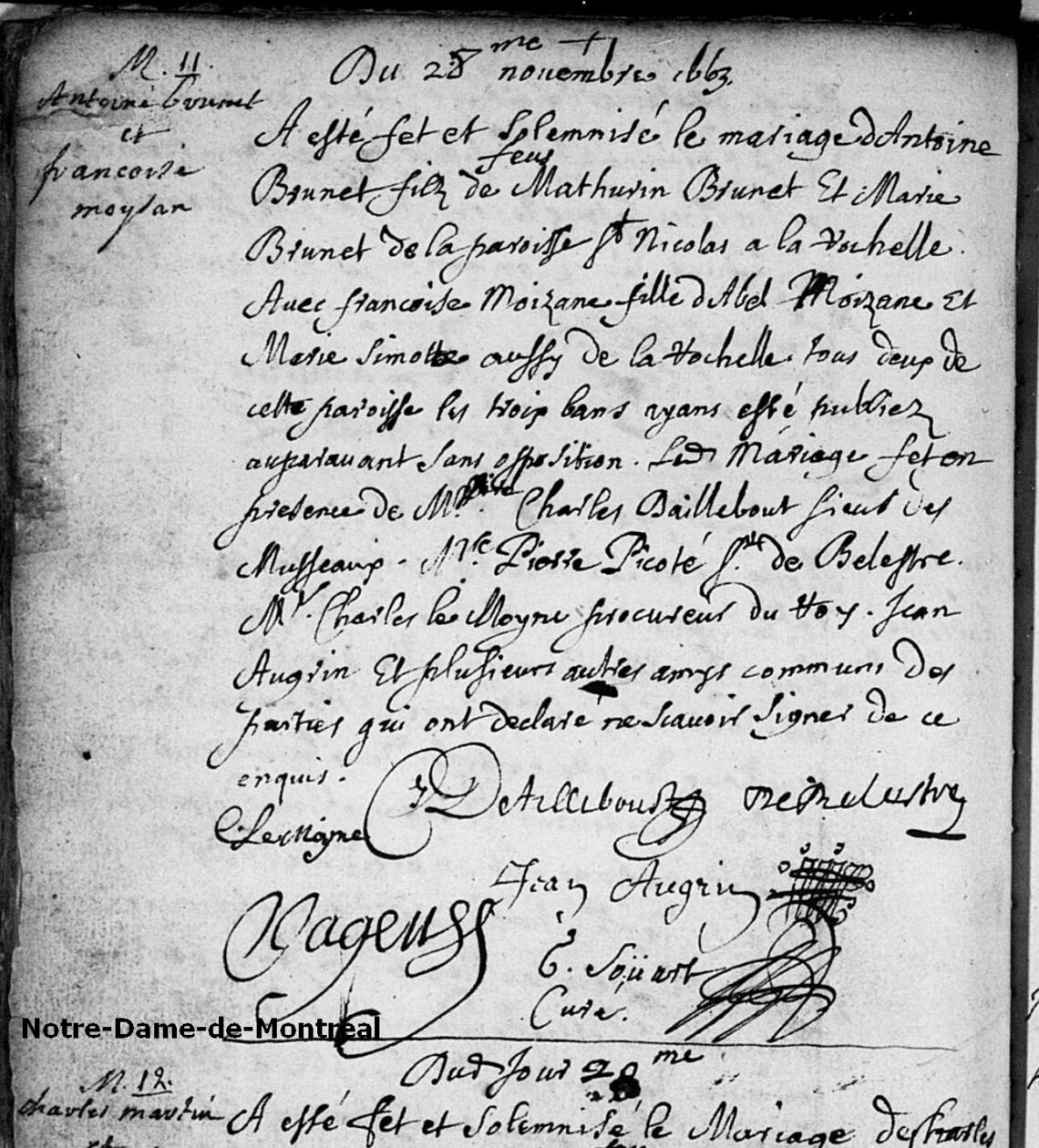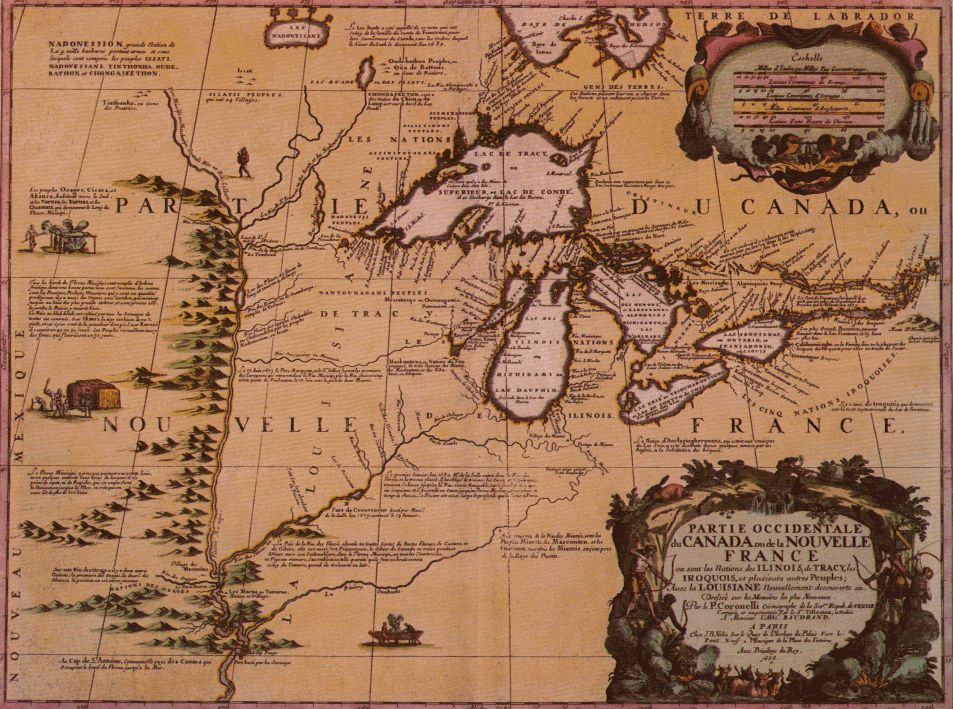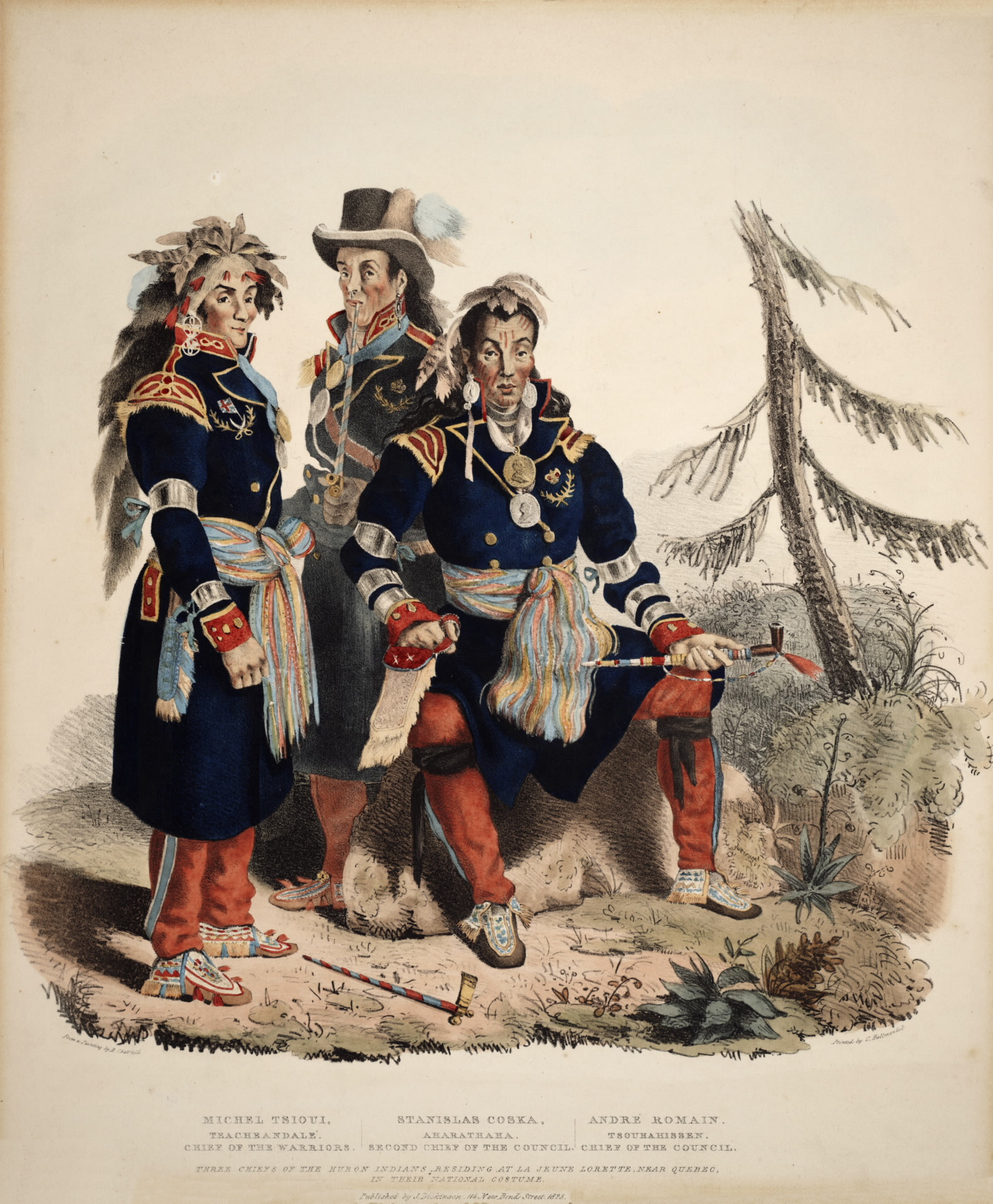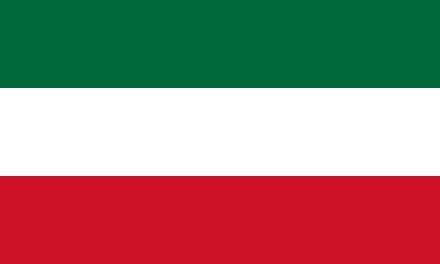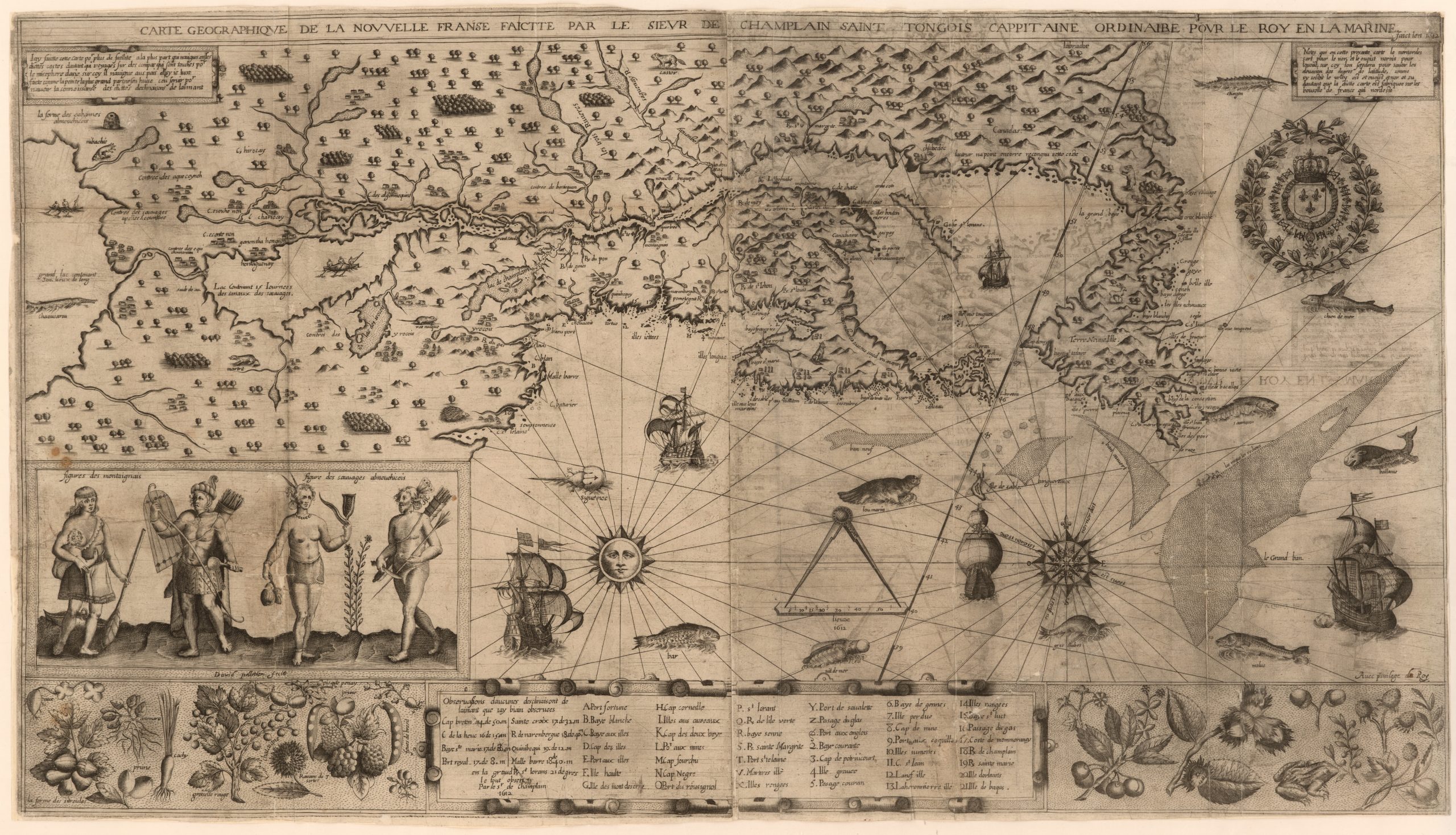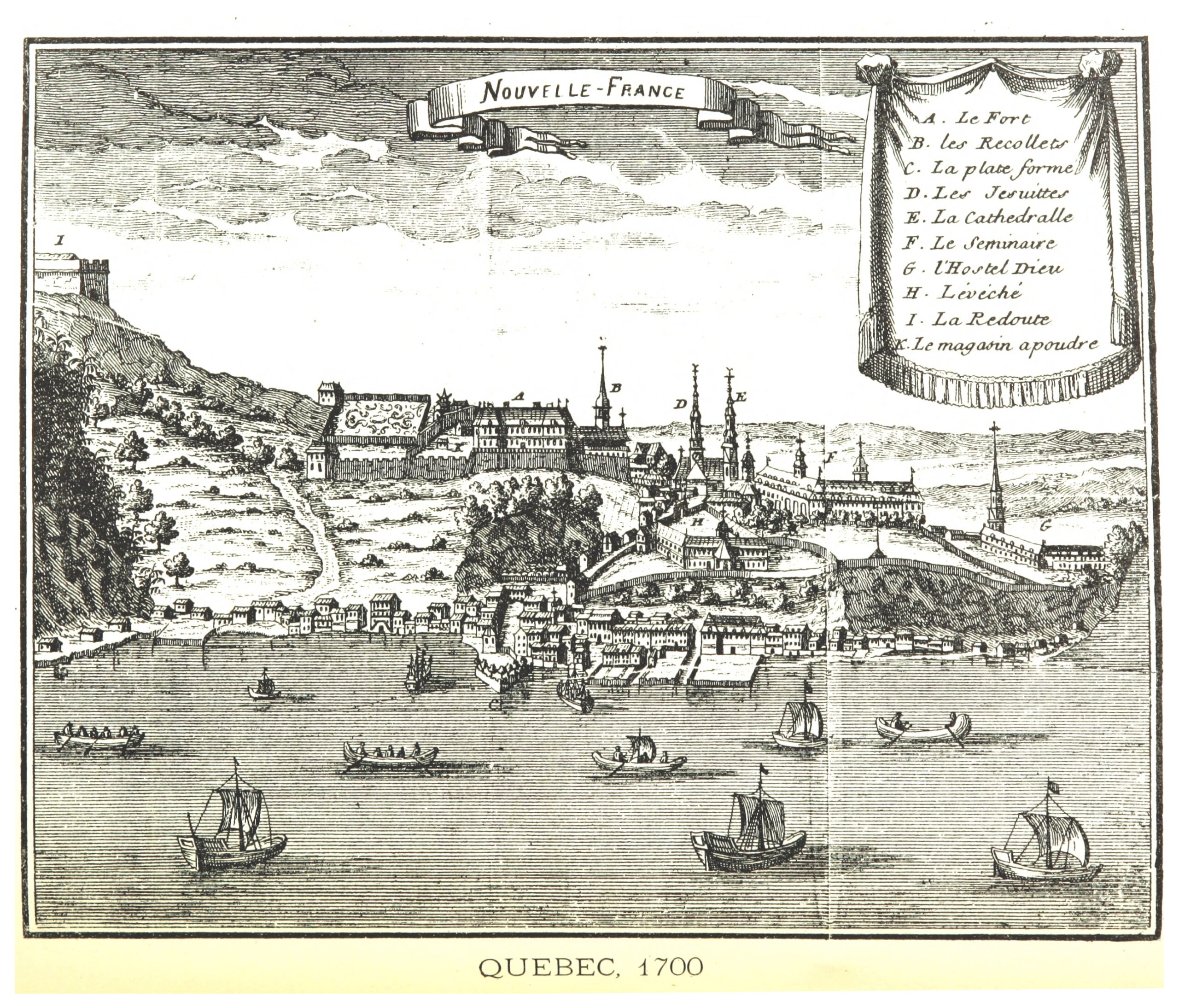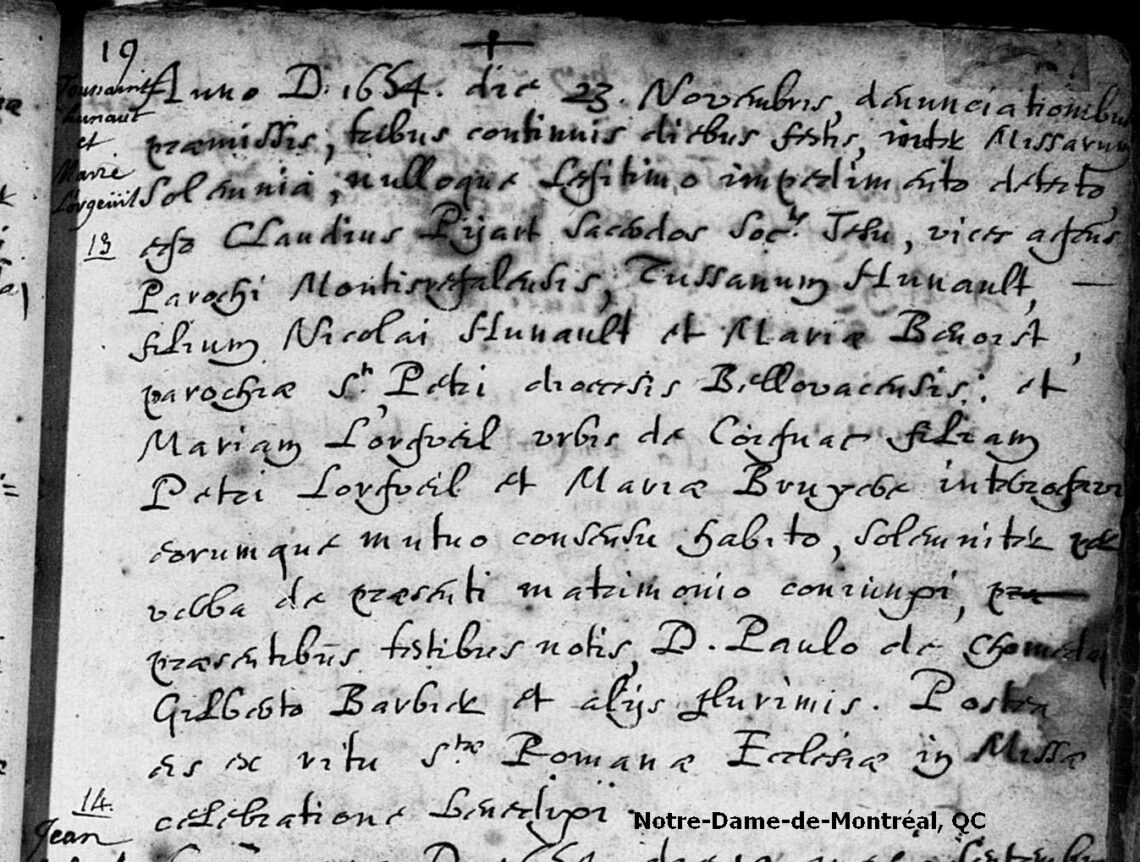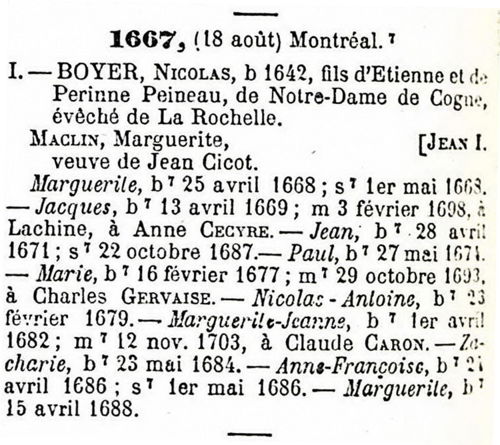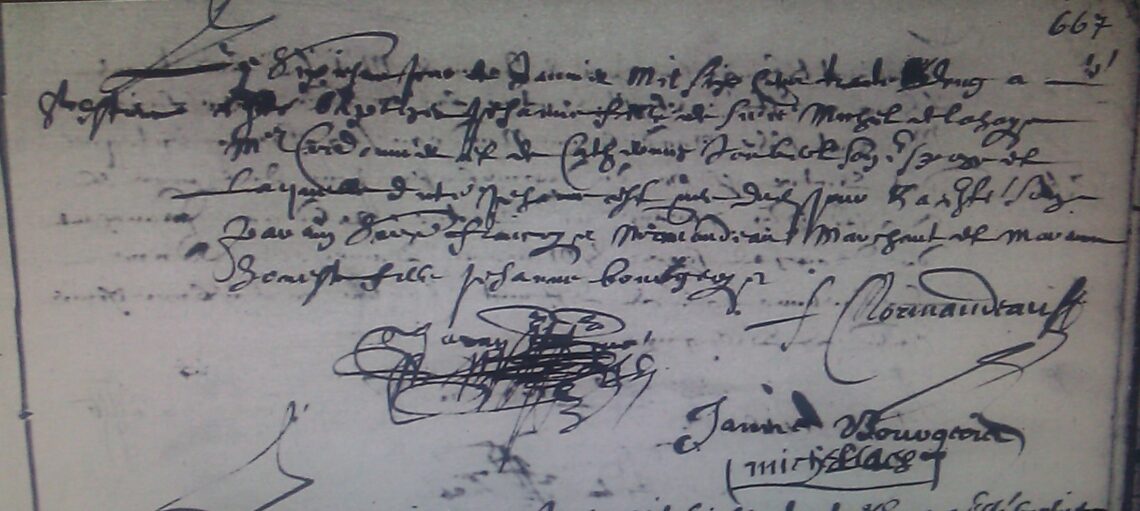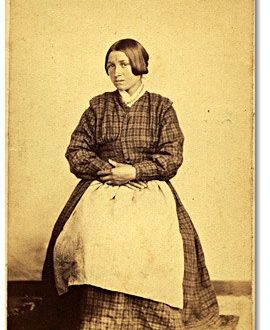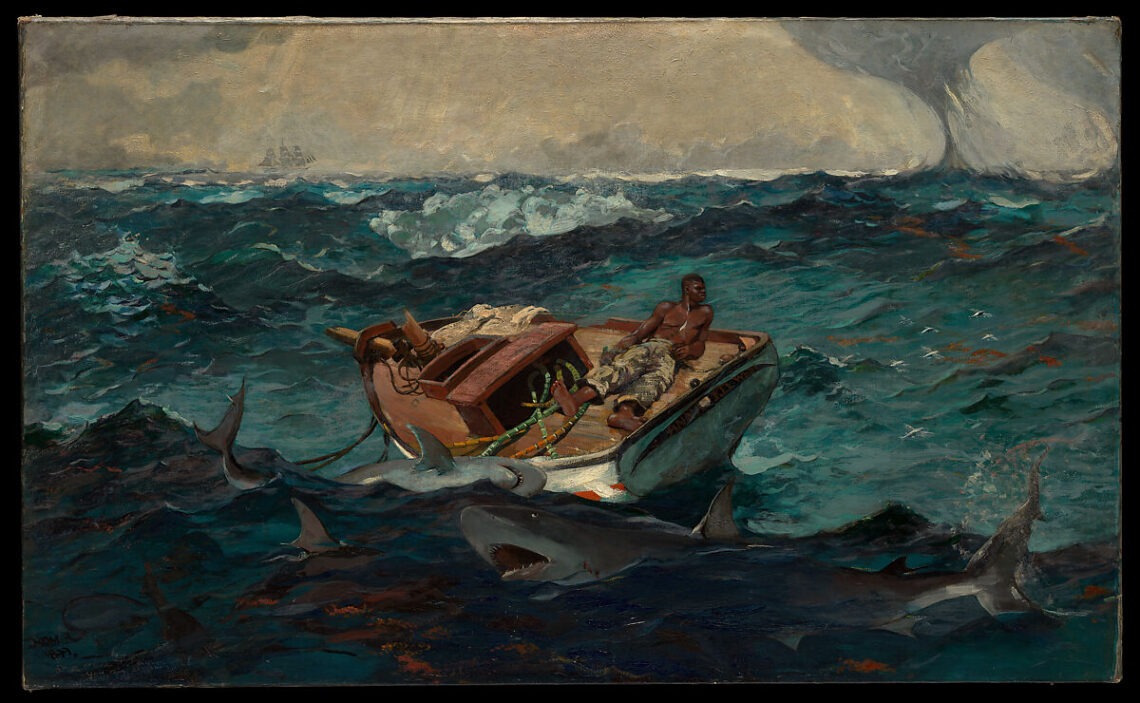-
Geneviève Gamache & Julien (Fortin) Fortin dit Bellefontaine
-
Vincente (Devarieux) Des Varieux & Pierre Gagnon
Vincente Des Varieux (1624 – 1695) Variants: Desvrieux, De Varieux, Devanier Parents She was the daughter of Jean (Desvarieux) Des Varieux (1600-after 1642) and Marie (Chevalier) Devarieux (1600-1695).[1] Birth She was born around 1624 in Saint-Vincent-d’Aubermail, Pays de Caux, Seine-Maritime, France. Marriage On September 14, 1642, at Notre-Dame Parish in Quebec, Canada, Vincente Des Varieux, aged ~18 years, married Pierre Gagnon, aged 30 years, son of Pierre Gaignon (c.1572-1633) and Renée Roger (c.1580-after 1647) (also known as Renée Madeleine Roger).[2][3] Children of Pierre Gagnon & Vincente Desvarieux[4] 1666 Census Pierre Gagnon, 50, merchant; Vincente des Varieux, 42, his wife; Jean, 22; Pierre, 20; Paul, 16; Joseph, 14; Marie, 11; Raphaël,…
-
Catherine Crampon & Pierre Voyer
-
Marie Deligny & Louis Jobidon
-
Marguerite Morisseau
-
François Peltier
-
Mathurine Roux & Gabriel Rouleau dit Sansoucy
-
Marie Pinet de la Chenaye & Pierre Masse
-
Marie Armand & Guillaume David
-
Catherine St-Père & Nicolas Rivard dit Lavigne
-
Jeanne Testard & François Leber
-
Louise Gagné (Gasnier) & Claude Bouchard
-
Catherine Caron & Jacques Dodier
-
Charles Godin & Marie Boucher
-
Noël Langlois & Françoise Grenier
-
Settlers & Colonists of New France
The Company of One Hundred Associates (Compagnie des Cent-Associés) was obligated by its charter to transport and establish 4,000 settlers in New France between 1628 and 1643. While the company fell far short of this goal, it did facilitate the immigration of several hundred colonists who formed the core of French settlement in North America. Early Settlement Patterns The First Families Louis Hébert (1575-1627) and Marie Rollet (1580-1649) Though they arrived before the Company of One Hundred Associates was formed, the Hébert family is considered the first permanent French farming family in Quebec. Louis was an apothecary who became a farmer in Quebec, arriving in 1617. After Louis’s death, Marie…
-
Marguerite Couillard
-
Marguerite Langlois
-
Guillaume Hébert
-
Emery Blouin & Marie Carreau
-
Sieur Clément Lériger de Laplante & His Wife Marie Roy
-
Françoise Hébert & Guillaume Fournier
-
Anne Cloutier & Robert Drouin
-
Soldiers & Navigators of New France
-
Missionaries & Clergy in New France
-
Governors & Officers of the Company of New France
-
Investors & Backers of the Company of New France
-
Charles de Saint-Étienne de la Tour: Early Leader of New France
-
Samuel de Champlain: Explorer & Founder of Quebec
-
Jean de Brébeuf & Other Missionary Figures of the Compagnie de la Nouvelle France
-
Cardinal Richelieu: Founder of the Compagnie de la Nouvelle France
-
Pierre du Gua de Monts (First Governor of New France)
-
Marie Grandin & Jean Baudet
-
Marie Debure & Jean Bernard dit Anse
-
Catherine Ducharme & Pierre Roy
-
Françoise Moisan & Antoine Brunet
-
Ozanne (Anne) Achon and Pierre Tremblay
-
How-to Research New France
New France, the area colonized by France in North America during a period beginning with the exploration of the Saint Lawrence River by Jacques Cartier in 1534 and ending with the cession of New France to Spain and Great Britain in 1763, offers a rich history for genealogists and historians. This guide provides resources to aid your research. I. Understanding the Historical Context Before diving into genealogy, understanding the historical backdrop is crucial. New France encompassed vast territories, and its history is intertwined with French colonization, indigenous relations, and eventual British conquest. Maps Visualizing the extent of New France is essential. Here are some resources: Key Historical Periods II. Genealogical…
-
Marie-Anne Hardy & Pierre Mallet
-
Marie Lorgueil & Toussaint Hunault dit Deschamps
Marie Lorgueil & Toussaint Hunault dit Deschamps Marie Lorgueil Original name: Orgueille (variations: Orgueil, Orcüeil) Biography Born in Bordeaux (Ste-Croix parish), Guyenne (Gironde), on June 14, 1634, and baptized the following day. Daughter of Pierre Orgueille and Marie Bruelle. Godparents: Claude __ (illegible) and Marie Frugeau.12 She arrived in Montreal on November 16, 1653, as part of The Great Recruitment (La Grande Recrue).34 Marriage On November 23, 1654, Marie married Toussaint Hunault dit Deschamps in Montreal. The marriage was officiated by Jesuit priest Claude Pijart. Witnesses included Paul de Chomedey and Gilbert Barbier.56 Neither spouse could sign their names.7 Children Thècle Hunault – Born & baptized September 23, 1655; married…
-
Marguerite Maclin (Maquelin) & Nicolas Bouhier (Boyer)
-
Jeanne Merrin & Henri Perrin
-
Marie Rocheron and François Gaulin
Pioneers of New France Marie Rocheron Marie Rocheron was baptized on April 21, 1639, in Saint-Cosme-de-Vair (now Saint-Cosme-au-Vairais), Perche, France. She was the daughter of Julien Rocheron and Martine Lemoyne, and her godparents were Marin Fortin and Marie Le Sallier. [1, 8, 9, 10] Marie migrated to New France in 1657, accompanied or followed by her brothers Gervais and Simon. [6, 11] François Gaulin François Gaulin was baptized on August 25, 1630, in Saint-Martin-du-Vieux-Bellême, Perche, France. He was the son of Vincent Gaulin and Marie Bonnemer, and his godparents were François Huet and Marie Boucher. [11, 12, 13, 14, 15] François migrated to New France around 1652. His sister Marguerite…
-
The Lachine Massacre (August 4-5, 1689)
The Lachine Massacre was a devastating attack on the French settlement of Lachine, located near modern-day Montreal, on the nights of August 4-5, 1689. A force of approximately 1,500 Iroquois warriors, motivated by longstanding tensions with the French, territorial disputes, and revenge for prior French military actions against their villages, launched the assault. The massacre began as soon as the Iroquois warriors landed at Lachine. Armed with both firearms and traditional weapons, they struck swiftly and mercilessly. Over the course of the night and into the early morning hours, two hundred French settlers and soldiers were killed, while another one hundred and twenty were captured. The Iroquois did not discriminate…
- Uncategorized
Opt-out preferences
-
Moise Dupuis & Marie Anne Christiaanse
Moise Dupuis (1673-1750) Moyse Dupuis was born on 10 July 1673, baptized on the 18th in Québec (ND), son of François Dupuis and of Georgette Richer; his godfather was Moyse Hilaret, his godmother Catherine Marchand, wife of Laurent Nafrichou. Historical ContextDuring the late 17th and early 18th centuries, the fur trade was a significant economic activity in New France. Coureurs de bois, or “wood runners,” were French-Canadian traders and explorers who ventured into the wilderness to trade with Indigenous peoples and collect furs. Moïse Dupuis’s Possible InvolvementWhile I couldn’t find direct evidence that Moïse Dupuis was a licensed coureur de bois, some records suggest he might have been involved in…
-
André Robidou dit l’Espagnol & Jeanne Denote
André Robidou dit l’Espagnol’s story is fascinating, and there’s more to explore. Born around 1640 in Galicia, Spain, André made his way to France, where he worked as a sailor in Nantes before signing a three-year indenture contract to work in New France. He arrived in Québec in 1661 and eventually settled in Laprairie (now La Prairie, Québec). His tale offers another compelling example of the soldiers of the Carignan-Salières Regiment who transitioned from military service to the challenges and opportunities of settler life in New France. His nickname, l’Espagnol (the Spaniard), is intriguing, hinting at a possible connection to Spanish territories, whether through his origins, travel, or perhaps even…
-
Anne Lepere & François Pinsonnault dit Lafleur
-
French-America Resources
The following information, documents and maps are provided to help with research. ManyRoads French-America Libraries Maps: If there are additional resources you wish to see added to our collection, please me know. You may get in-touch with me directly via our contact page.
- Uncategorized
Public Domain Images
If you are like me, you need and use images in your genealogy work. Because I have finally gotten tired of remembering where these materials are to be found, I have created this listing. Feel free to use these sites for your work, too. Please use our contact page to let us know if there are other free sites you believe we should add.
